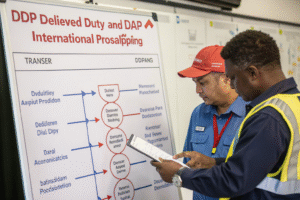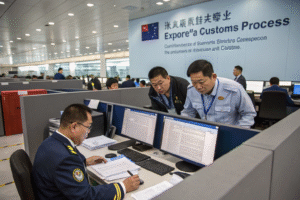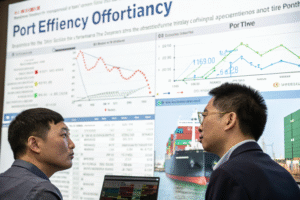When tariffs, customs delays, or regulatory issues disrupt your shipments, the financial impact can be significant. Many importers assume their standard cargo insurance provides comprehensive protection, only to discover that policy exclusions leave them bearing substantial losses from tariff-related problems. Understanding the boundaries of cargo insurance is crucial for proper risk management.
Standard cargo insurance does not cover tariff-related issues, customs fines, confiscated goods, or delays caused by regulatory actions. These policies primarily protect against physical loss or damage to goods during transit, not financial losses from compliance failures, government actions, or import regulation violations.
Let's examine what cargo insurance actually covers, where the protection gaps exist for tariff-related issues, and what supplemental coverage options can fill these critical gaps in your risk management strategy.
What does standard cargo insurance actually cover?
Cargo insurance is designed to protect against physical risks during transportation rather than regulatory or financial risks. Understanding the fundamental purpose of these policies helps clarify why tariff issues fall outside their scope.
Standard cargo insurance policies typically cover physical loss or damage from external causes during transit, including vessel sinking, aircraft crashes, truck accidents, theft, fire, and natural disasters. Most policies also cover general average contributions and some salvage costs. The coverage applies from the point of origin to final destination but focuses exclusively on physical damage to the insured goods rather than financial consequences of delays or regulatory actions.
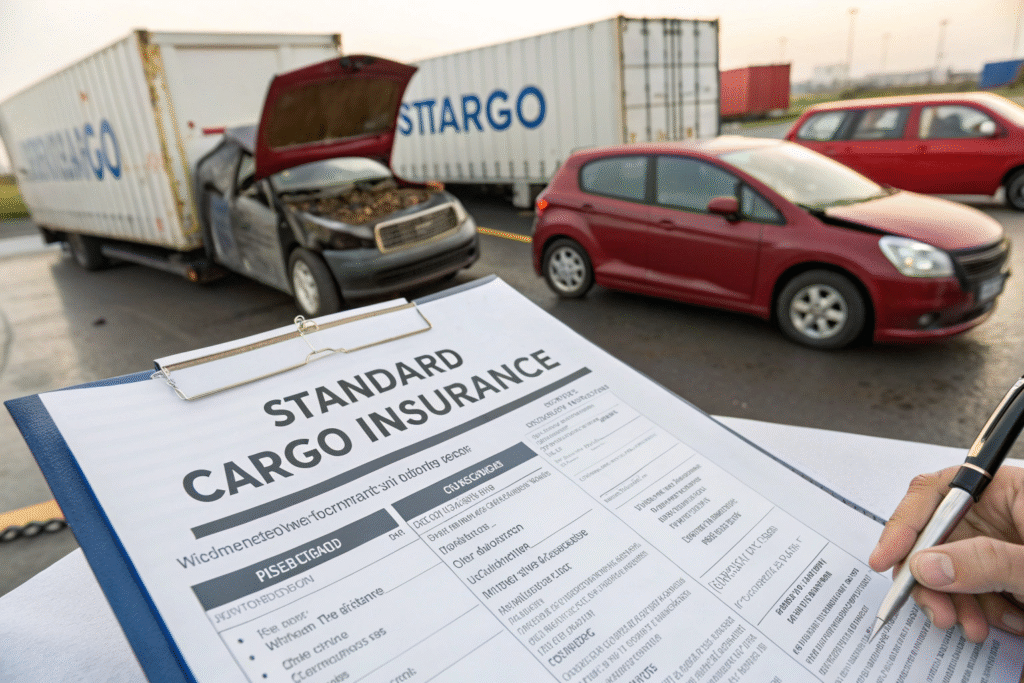
What physical risks are typically covered?
Standard policies protect against:
- Natural disasters like storms, earthquakes, and lightning
- Accidents including collisions, derailments, and sinking
- Theft and pilferage during transportation or storage
- Fire and explosion regardless of cause
- Water damage from various sources
- Jettison when cargo is deliberately thrown overboard to save the vessel
These physical damage scenarios represent the core protection of cargo insurance.
When does cargo insurance coverage begin and end?
Coverage periods vary by policy but typically:
- Marine cargo: Warehouse to warehouse coverage
- Air cargo: Airport to airport or door to door
- Inland transit: Specific trip or blanket coverage
- Storage: Usually limited time in warehouses
- Exclusions: Often apply during inadequate packaging or improper storage
Understanding these boundaries ensures proper coverage throughout your supply chain.
What tariff-related issues are specifically excluded?
Tariff problems represent a category of financial and regulatory risk that standard cargo insurance explicitly excludes. These exclusions exist because tariff issues don't involve physical damage to goods and often result from importer actions or compliance failures.
Standard policies exclude losses due to customs rejection, confiscation by authorities, import prohibition, license revocation, quota restrictions, anti-dumping duties, and valuation disputes. They also exclude consequential damages from delays, including lost sales, production stoppages, or customer penalties. Additionally, fines and penalties from regulatory violations are never covered, as insurance cannot protect against illegal activities or compliance failures.
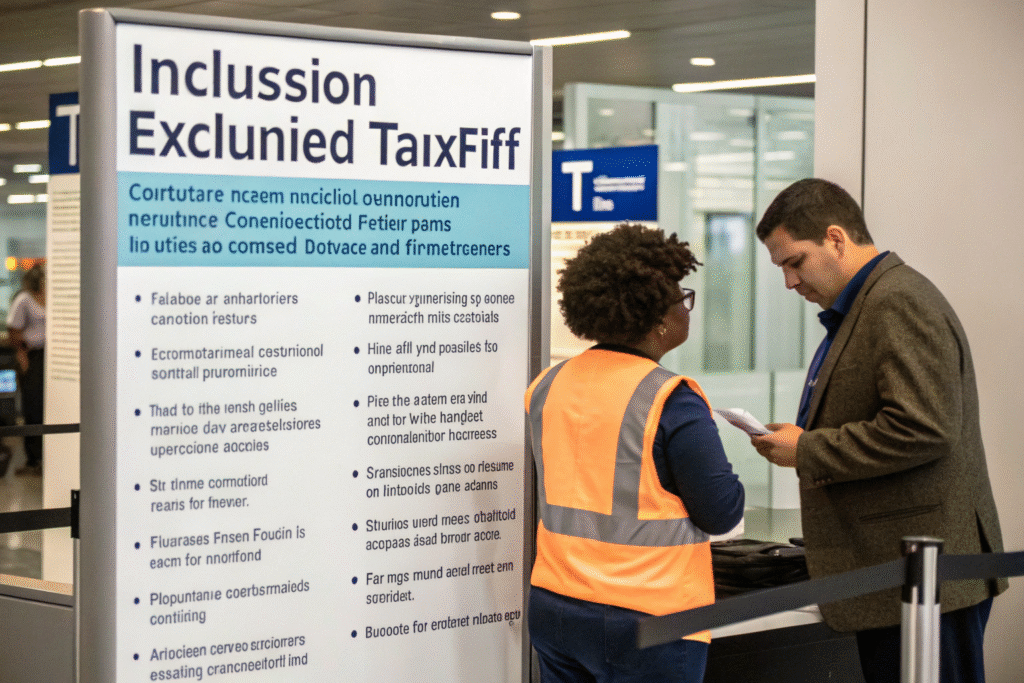
Why are regulatory actions excluded from coverage?
Insurance excludes these risks because:
- They're preventable through proper compliance management
- They involve legal violations that insurance shouldn't incentivize
- They're financial rather than physical losses
- They result from business decisions rather than accidental events
- Moral hazard concerns prevent covering illegal activities
These fundamental insurance principles make tariff issues uninsurable under standard policies.
What specific tariff problems are never covered?
Common excluded scenarios include:
- Goods seizure for regulatory violations
- Forced labor findings under UFLPA
- Classification errors leading to underpaid duties
- Customs fines and penalties for compliance failures
- Import ban enforcement for restricted products
- Anti-dumping duty assessments for specific commodities
These exclusions leave significant financial exposure for importers.
What insurance options address tariff-related risks?
While standard cargo insurance doesn't cover tariff issues, specialized insurance products and risk management strategies can provide protection for some tariff-related exposures. These solutions require separate policies or endorsements specifically designed for regulatory risks.
Trade credit insurance can protect against non-payment if customers refuse shipments due to tariff costs. Political risk insurance may cover losses from sudden tariff increases or trade embargoes. Some specialized marine policies offer limited delay coverage extensions. Contingency insurance can protect against specific risks like customs bonds or duty drawback claims. However, no insurance covers penalties for compliance failures or illegal activities.

How does political risk insurance help?
Political risk coverage may address:
- Expropriation of assets by foreign governments
- Currency inconvertibility preventing profit repatriation
- Political violence disrupting trade
- Contract frustration due to government actions
- Trade embargo imposition blocking established business
This coverage focuses on government actions rather than commercial disputes.
What protection does trade credit insurance offer?
Trade credit insurance typically covers:
- Customer insolvency preventing payment
- Protracted default by financially troubled buyers
- Political events preventing payment transfer
- Contract repudiation for non-acceptance of goods
- Pre-shipment risks for canceled orders
This coverage addresses customer payment failures rather than regulatory issues.
How can you manage tariff risks without insurance?
Since insurance options for tariff risks are limited and expensive, most businesses focus on risk management and mitigation strategies rather than insurance transfers. Proactive compliance management provides the most effective protection against tariff-related losses.
Implement robust compliance programs including accurate HS classification, proper valuation methods, thorough origin verification, and complete documentation. Work with experienced customs brokers and legal counsel specializing in your industry. Maintain detailed records supporting your import decisions. Conduct internal audits to identify potential compliance issues before customs examinations. These proactive measures provide better protection than any insurance policy for tariff-related risks.

What compliance practices prevent tariff problems?
Essential compliance measures include:
- Regular classification reviews ensuring accurate HS codes
- Valuation methodology documentation supporting declared values
- Origin verification systems for preferential claims
- Forced labor due diligence for high-risk sectors
- Recordkeeping systems maintaining required documentation
- Internal audit programs identifying potential issues
These practices prevent the problems that lead to tariff-related losses.
How does professional guidance reduce risks?
Expert assistance provides:
- Current regulatory knowledge about changing requirements
- Industry-specific experience with common compliance challenges
- Precedent understanding from previous rulings and cases
- Relationship management with customs authorities
- Dispute resolution capability when issues arise
This expertise is invaluable for navigating complex tariff regulations.
What financial protections exist for duty overpayments?
While insurance doesn't cover tariff errors, other mechanisms can help recover funds when overpayments occur. These financial tools provide protection through different mechanisms than traditional insurance.
Duty drawback programs allow recovery of 99% of duties paid on imported goods that are subsequently exported. Prior disclosure processes can mitigate penalties when importers discover and report their own errors. Protests can challenge customs decisions within specified timeframes. Binding rulings provide advance certainty about classification and valuation. These programs offer financial protection through regulatory mechanisms rather than insurance products.

How does duty drawback provide protection?
Drawback programs allow:
- Same condition drawback for exported imported goods
- Manufacturing drawback for components in exported products
- Rejected merchandise drawback for returned goods
- Substitution drawback using domestic materials
- Unused merchandise drawback for unused exports
These programs effectively provide 99% insurance against duties on exported goods.
What protection does prior disclosure offer?
Voluntary prior disclosure:
- Reduces penalties for self-discovered errors
- Limits lookback periods for previous shipments
- Demonstrates good faith to customs authorities
- Prevents criminal prosecution for innocent errors
- Provides closure for compliance concerns
This process mitigates consequences when errors are discovered.
Conclusion
Cargo insurance provides crucial protection against physical damage during transit but explicitly excludes coverage for tariff-related issues, regulatory penalties, and compliance failures. While specialized insurance products offer limited protection for some regulatory risks, the most effective approach combines robust compliance management, expert guidance, and utilization of regulatory recovery mechanisms like duty drawback. By understanding these coverage limitations and implementing comprehensive risk management strategies, importers can protect their businesses from both physical damage during transit and financial losses from tariff and compliance issues. The most successful importers treat tariff risk management as an integral business function rather than relying on insurance products that weren't designed for these exposures.




